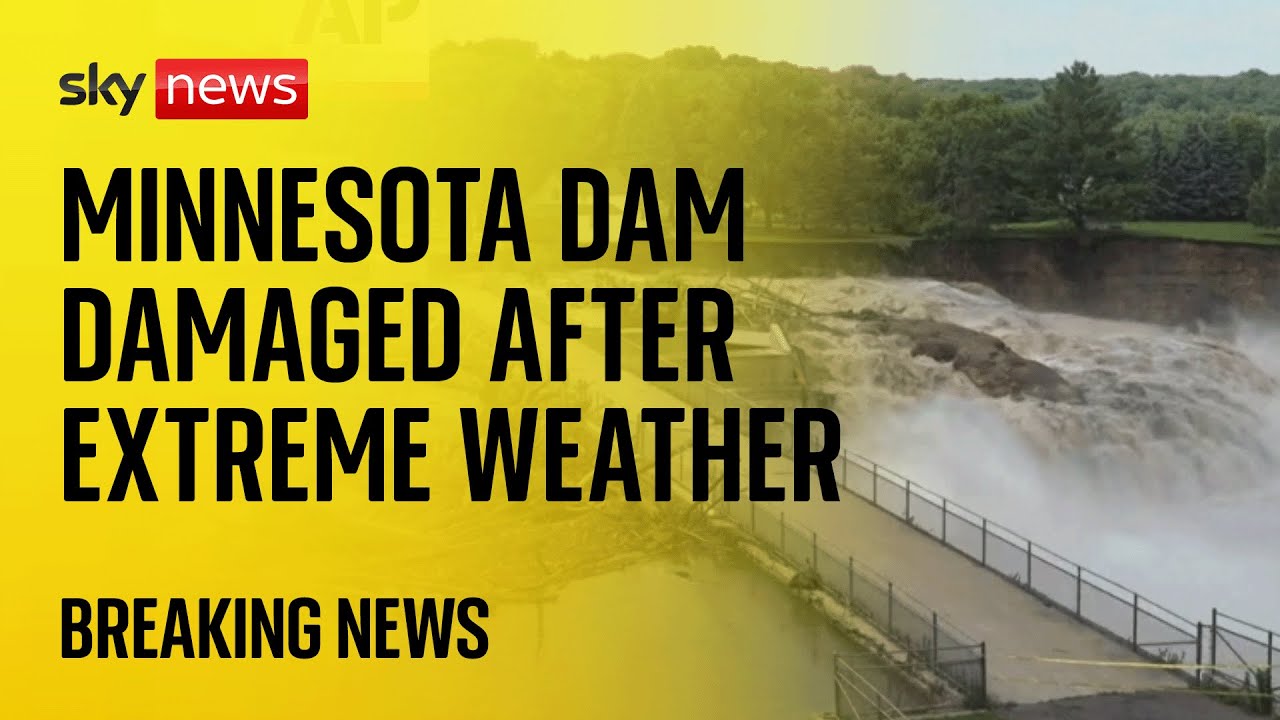Dam Failure in Minnesota

Dam failure minnesota –
Dam failures can have catastrophic consequences, leading to loss of life, property damage, and environmental degradation. Minnesota has experienced several notable dam failures, highlighting the importance of understanding the causes and impacts of these events.
The catastrophic dam failure in Minnesota, a sobering reminder of the devastating consequences of such events, underscores the critical need to understand and mitigate the risks associated with dam failure. As we delve into the complexities of dam safety, we must prioritize the safety of our communities and the protection of our environment from the potential perils of dam failure in Minnesota and beyond.
Causes of Dam Failures in Minnesota, Dam failure minnesota
The primary causes of dam failures in Minnesota can be attributed to:
- Overtopping: When water levels exceed the dam’s capacity, it can overtop the structure, leading to erosion and eventual collapse.
- Structural Failure: Defects in the dam’s design or construction can compromise its structural integrity, making it vulnerable to failure.
- Foundation Failure: Weak or unstable foundations can cause the dam to settle or shift, potentially leading to cracks and breaches.
- Natural Disasters: Extreme weather events, such as floods or earthquakes, can put excessive stress on dams, increasing the risk of failure.
Prevention and Mitigation Strategies

Minnesota has adopted comprehensive measures to prevent dam failures and mitigate their potential impacts. These strategies encompass proactive engineering practices, rigorous monitoring protocols, and well-coordinated emergency response plans.
Dam Design and Construction
Dam design in Minnesota adheres to strict engineering standards and guidelines established by the Minnesota Department of Natural Resources (DNR). Engineers conduct thorough site assessments, hydrological studies, and geotechnical investigations to ensure dam stability and resilience. Dams are constructed using high-quality materials and techniques, and their designs incorporate features such as spillways and emergency gates to manage water flow and prevent overtopping.
Monitoring and Inspection
Regular monitoring and inspection programs are crucial for early detection of any potential issues with dams. DNR inspectors conduct periodic visual inspections and utilize advanced monitoring systems to track dam performance. These systems measure parameters such as water levels, seepage, and structural integrity. Regular maintenance and repairs are carried out to address any identified deficiencies and ensure dam safety.
Emergency Response Plans
Minnesota has developed comprehensive emergency response plans in collaboration with local, state, and federal agencies. These plans Artikel clear procedures for responding to dam failures, including evacuation protocols, public notification systems, and resource mobilization. Emergency responders undergo regular training exercises to ensure a coordinated and effective response in the event of an emergency.
Case Studies and Lessons Learned: Dam Failure Minnesota
Dam failures can have catastrophic consequences, causing loss of life, property damage, and environmental degradation. By analyzing case studies of dam failures in Minnesota, we can identify common patterns and contributing factors, and learn valuable lessons that can help us prevent future failures.
Lessons from Past Failures
One of the most important lessons learned from past dam failures is the need for proper design and construction. Dams must be designed to withstand the forces of water, including floods, earthquakes, and other natural hazards. They must also be constructed using high-quality materials and workmanship.
Another important lesson is the need for regular inspection and maintenance. Dams must be inspected regularly to identify any potential problems, and repairs must be made promptly. Regular maintenance can help to prevent small problems from becoming major failures.
Best Practices and Innovative Technologies
In addition to proper design, construction, and maintenance, there are a number of best practices and innovative technologies that can be used to improve dam safety. These include:
- Using advanced monitoring systems to detect any changes in the dam’s condition.
- Installing early warning systems to alert dam operators to potential problems.
- Developing emergency action plans to guide dam operators in the event of a failure.
By implementing these best practices and innovative technologies, we can help to prevent dam failures and protect lives and property.
Dam failures in Minnesota have a devastating history, one of the most notable being the Mankato Dam failure in 1868. This catastrophic event unleashed a torrent of water that ravaged the city, causing immense destruction and loss of life. Dam failures in Minnesota continue to serve as a stark reminder of the importance of proper infrastructure maintenance and emergency preparedness.
The dam failure in Minnesota brought to light the devastating consequences of such incidents. This catastrophic event highlights the need to prioritize dam safety and maintenance. By understanding the causes and mechanisms of dam failure , we can take proactive measures to prevent similar tragedies.
The lessons learned from Minnesota can inform our approach to dam safety management, ensuring the protection of communities and the environment.
In Minnesota, dam failures have occurred with devastating consequences. One such incident was the collapse of the Rapidan Dam in 1965, which sent a torrent of water through the Black Hills and beyond. This rapidan dam failure highlights the importance of proper dam maintenance and engineering.
In Minnesota, efforts are ongoing to ensure the safety and integrity of dams to prevent similar tragedies.
The recent dam failure in Minnesota is a stark reminder of the devastating consequences that can result from the collapse of these structures. Dam failures, which occur when a dam is unable to withstand the pressure of the water it holds back, can cause widespread flooding, property damage, and loss of life.
According to the dam failure database, there have been over 200 dam failures in the United States since 1900, resulting in more than 10,000 deaths. The Minnesota dam failure is a tragic example of the potential risks associated with these structures and highlights the need for proper dam maintenance and safety measures.
